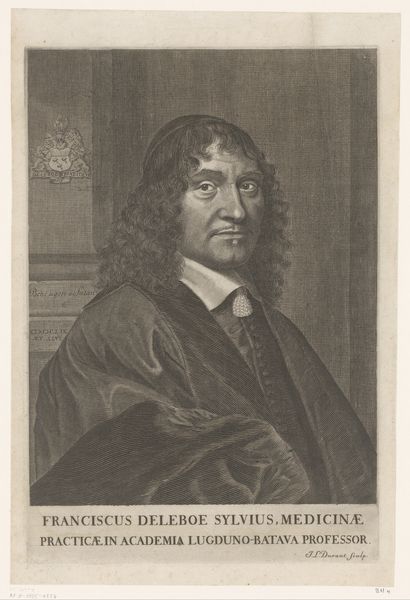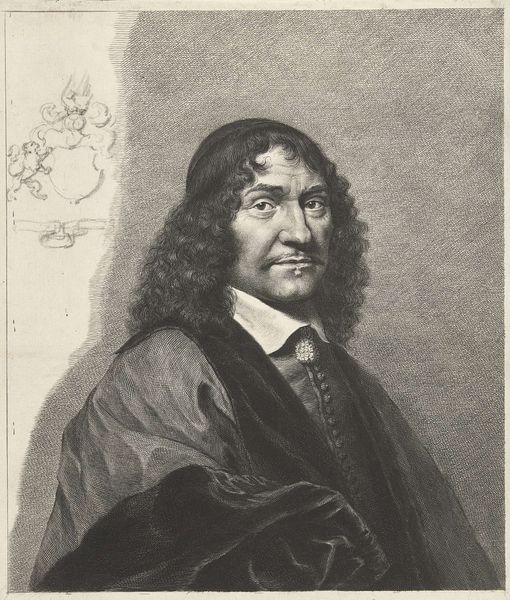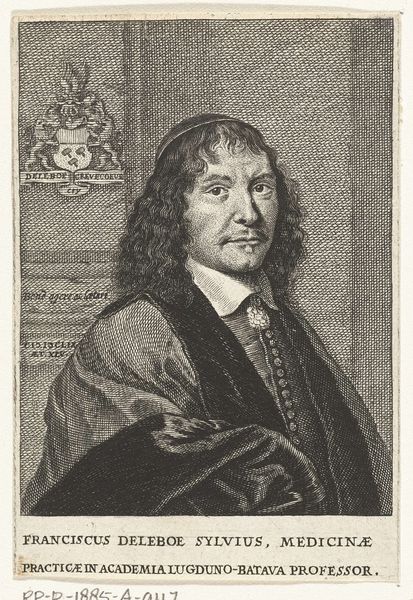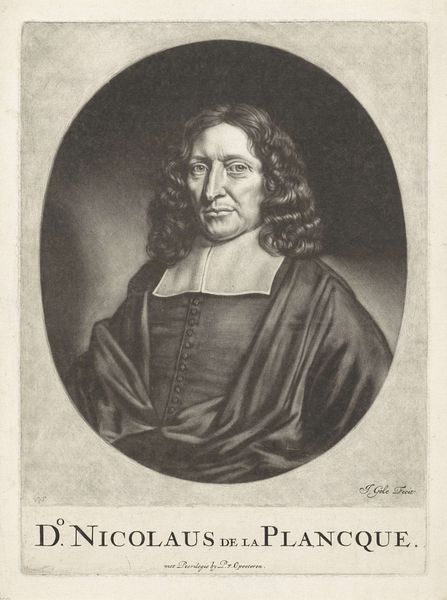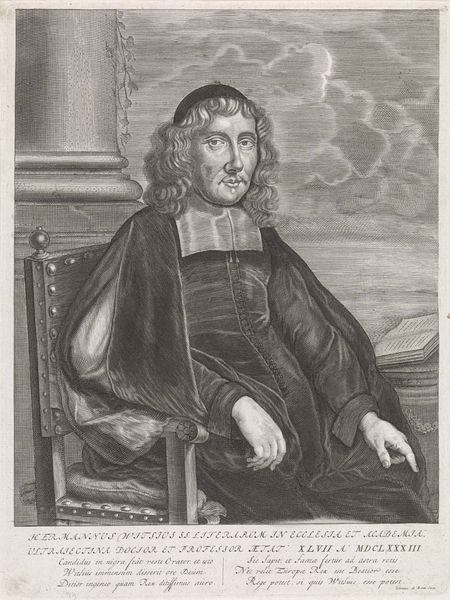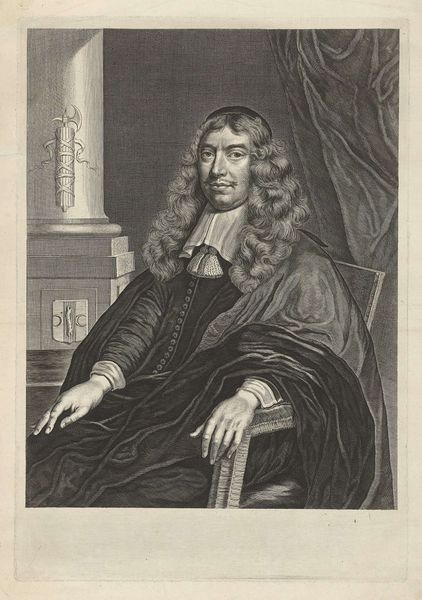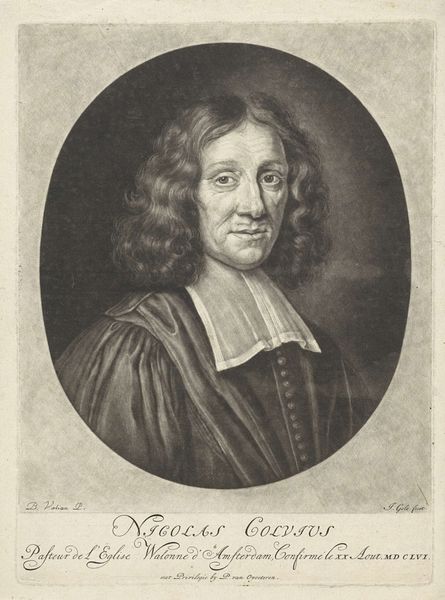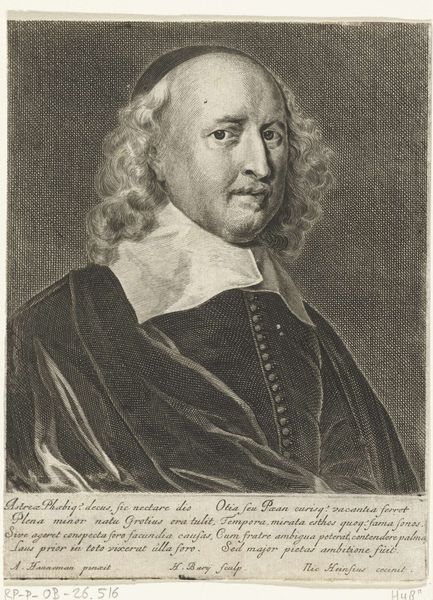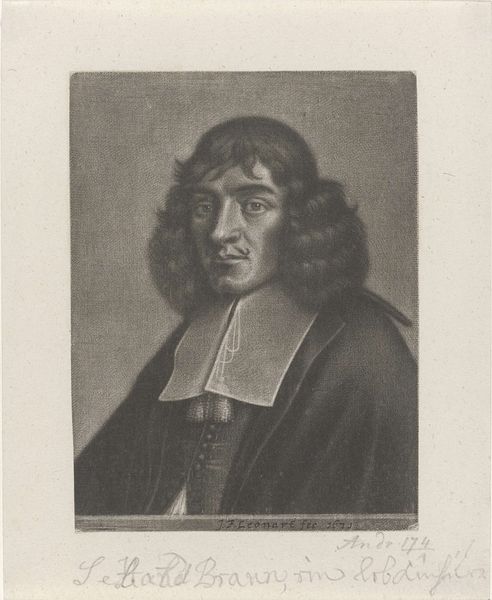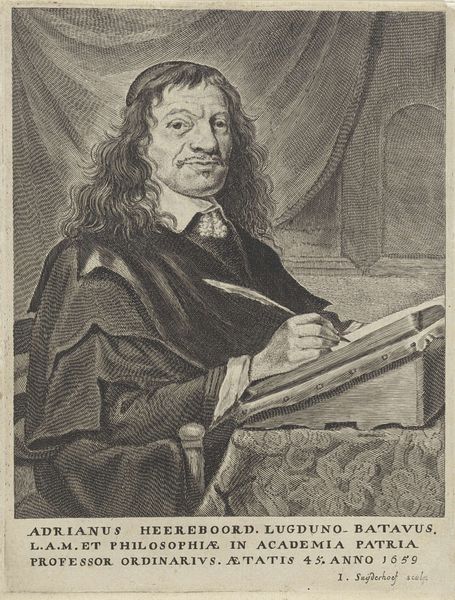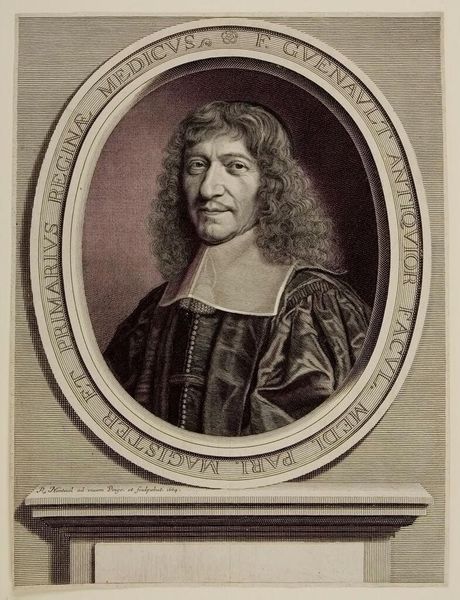
print, engraving
#
portrait
#
baroque
# print
#
engraving
Dimensions: height 319 mm, width 236 mm
Copyright: Rijks Museum: Open Domain
Editor: We are looking at "Portret van Franciscus de le Boë Sylvius," made in 1659 by Cornelis van Dalen II. It's an engraving on paper. The subject looks directly at the viewer, giving off a somewhat serious tone. What immediately grabs me is the stark contrast created by the engraving. What elements do you find most compelling in this portrait? Curator: I find the use of line absolutely crucial here. Consider how van Dalen constructs form, texture, and space almost entirely through variations in line weight and density. The lines defining Sylvius’s face are far more deliberate and concentrated, directing the eye there, wouldn’t you agree? Note also the texture of the draped clothing and how its folds create planes. How does the treatment of line inform our reading of the subject’s character? Editor: I hadn’t thought about the subject’s character that way, but it's interesting to think that the use of line gives us clues. The heavier lines around the eyes and mouth make him seem older and maybe even wiser. Curator: Precisely. And consider the overall composition. The pillar to the left and the textured background provide a spatial context, but it's really the subject’s placement and gaze that command attention. What effect do you think the artist was trying to achieve? Editor: It really emphasizes his presence, maybe suggesting authority and intellect through the intense focus on his gaze. I never considered that so much could be conveyed just through the lines of an engraving. Curator: The genius lies in van Dalen’s mastery of line. This artwork reminds us that fundamental elements of art – such as line, form, texture, and composition – are, in themselves, rich in potential for meaning-making.
Comments
No comments
Be the first to comment and join the conversation on the ultimate creative platform.
